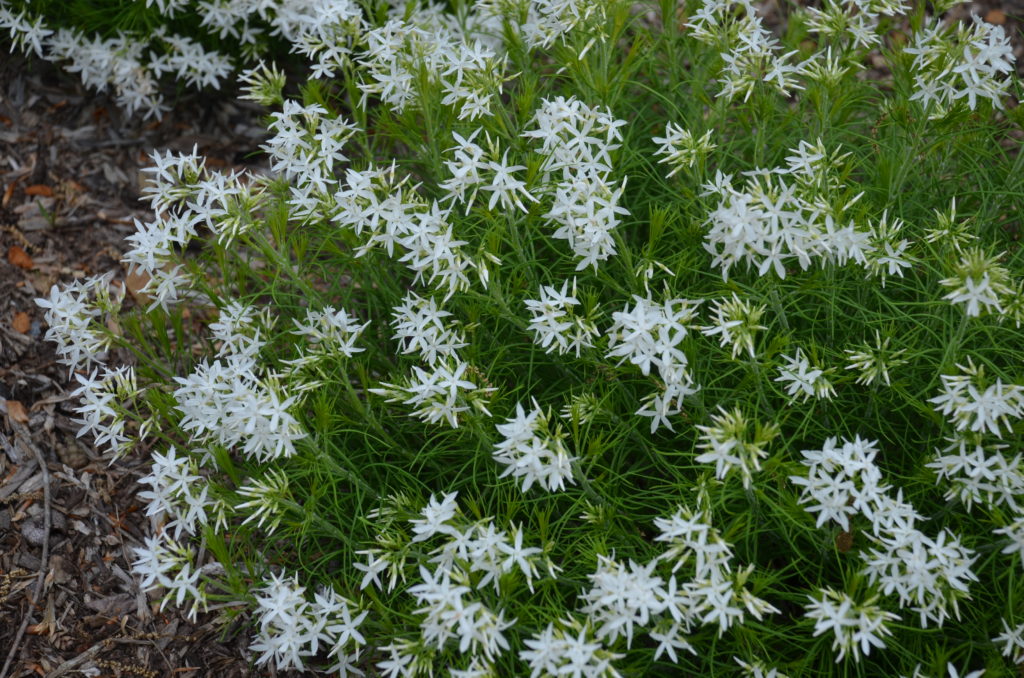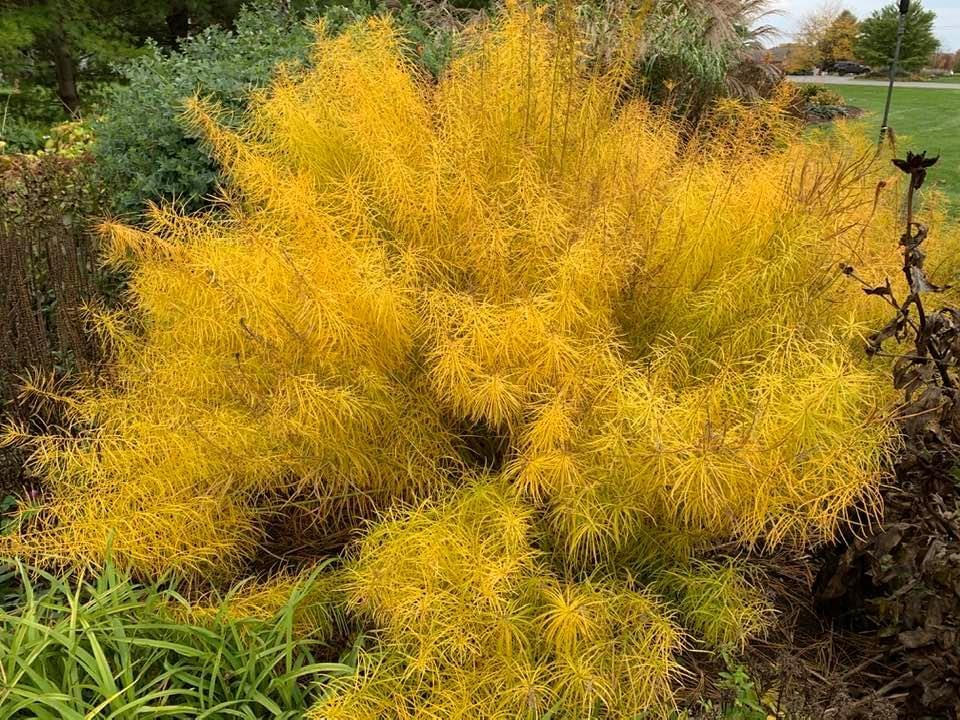Amsonias, commonly called blue star, are a group of easy-to-grow, long-lived native perennials. These highly dependable plants offer three-seasons of landscape interest: showy, long-lasting blooms in spring (mostly in May); threadlike green foliage in summer; and yellow foliage in fall.

Amsonias are native primarily to North America and belong to the dogbane plant family (Apocynaceae). This clump-forming perennial has narrow, alternate leaves and clusters of 5-petaled, light blue flowers. Elongated, pod-like fruits later develop filled with hard black seeds.
Amsonias prefer moist, loamy, well-drained soils, including clay soils and
in full sun to part shade. One year old plants are moderately drought resistant and wonderfully water-wise. Plants standup taller, sturdier, and more flowering in full sun. In partial shade and/or in rich soils, plants often open up (floppy) and frequently require staking. Foliage tends to take on brighter golden hues in the fall. Midday shade protection in hot Southern climates promotes longer-lasting flowering.
For a neater appearance and to promote a bushier habit, cut back stems by 1/2 to 1/3 into a neat mounding habit after flowering. Newer dwarf cultivars do not require staking or cutting back. Once established, amsonias are moderately drought-tolerant.

Amsonia flowers attract butterflies, hummingbird moths, and a number of bee species. Ruby-throated hummingbirds are also occasional visitors. Amsonias are not subject to disease or pest problems, including deer and rabbits.
There are several species of bluestar (3 listed here). Tidy foliage and a striking vase-shaped plant habit allow bluestars to perform well as either an accent plant or in mass plantings. Smaller varieties work well in containers.
Warning: Plant sap can be mildly irritating and wearing protective gloves is advised. Bluestars may be divided in late summer or early fall. Stem cuttings can be taken after flowering and rooted.
Three Popular Amsonia Species
Arkansas Bluestar (Amsonia hubrichtii) is noted for its lovely narrow, thread-like, and glaucous (hairy) foliage. Foliage that turns brilliant gold in autumn. Powdery blue, 1/2 inch wide star-like flowers appear in terminal clusters in late spring atop 2 – 3 feet tall stems. (Zones 5-8)
Eastern blue star (Amsonia tabernaemontana) is known by a number of other names including willow amsonia and blue dogbane. Its light blue flowers appear in mid- to late spring and light secondary bloom often occurs in late summer/fall. Dense foliage starts off lime green and matures dark green. Plants grow 2-3 feet tall with larger coarser textured leaves than A. hubrichtii. Cultivars: ‘Storm Cloud’ and ‘Blue Ice’ (hybrid). (Zones 3-9)
Fringed bluestar (Amsonia ciliata), aka downy amsonia, grows to 2-3 feet tall with terminal clusters of star-like, light blue flowers in May atop generally erect stems clad with narrow, almost needle-like, fine-textured, green leaves. silvery, fuzzy hairs cover new leaves and plant stems. Foliage turns mixed shades of yellow in fall. Zones 5-9

 Posted in
Posted in 
